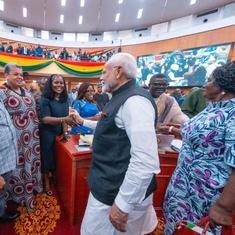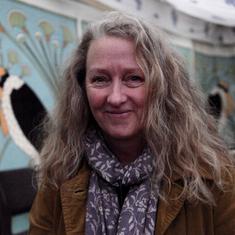When a young Bangladeshi man, Altab Ali, was found murdered on the streets of Whitechapel, London, on May 4, 1978, his murder awoke the local Bangladeshi community.
Ten years after Enoch Powell’s infamous Rivers of Blood speech, Ali’s murder was symptomatic of the racial antagonism stirred up in the 1970s. Extreme white supremacist groups such as the National Front engaged in organised and systematic patterns of violence against the local Bangladeshis of East London, using slogans such as “Blacks Out”, “White is Right” and “kill the black bastards”.
To mark the 40th anniversary of Ali’s senseless murder, I spoke to people who knew him personally, as well as community leaders and local residents who experienced first-hand the culture of violence and hate that contributed to the racially motivated killing.
Ali, a 25-year-old machinist, emigrated from Bangladesh to the UK in 1969. Arman Ali, a close relative, told me about Ali’s “kind-hearted, respectful and polite nature”. He said, “He had just recently married. He worked very hard and like most other British Bangladeshis, his ambition was to seek a prosperous future and support his family with his earnings.”
Ali was returning home from work in nearby Brick Lane when he was fatally stabbed in Adler Street, Whitechapel by three teenagers. In 1998, a park near where Ali died was subsequently renamed Altab Ali Park in his memory and continues to act as a symbol of community, hope and peace.
Living in fear
In contrast to the gentrified, trendy vibe of 2018, Brick Lane was a dangerous place to live and work in the 1970s where skinheads and elements of the extreme Far Right from all over east London came to indulge in routine acts of “Paki bashing”. It’s important to emphasise that these racially motivated violent acts were mainly carried out by an extremist minority. Many Bangladeshis lived harmoniously with their white working-class neighbours.
Most of the victims of violent hate crimes were newly arrived Bangladeshi men working in the rag trade which was primarily concentrated within the E1 postcode. “When Altab Ali was murdered,” recalled Arman, “fear spread within the community. People were afraid of going to work, sending their kids to school, travelling on public transport.”
I spoke to community activist Abu Mumin who describes himself as a “survivor of that era of hate and violence”. He told me: “I shouldn’t be here right now talking to you. I should be either critically injured or dead.” Like Arman, Mumin vividly recalls the culture of fear and intimidation that paralysed a whole community: “‘Paki-bashing’ was a daily occurrence in schools, parks and the streets, and ‘100 metre after school dash’ to our homes to escape the skinheads was routine. I remember an incident in the late 1970s when a concrete boulder was thrown through our window, nearly killing my two younger baby brothers who were sleeping on the bed. We were all living in a state of fear.”
Pensioner Abdush Shahid also remembers the 1970s and ’80s with immense distress. He told me: “Local Bangladeshi businesses would always get vandalised, and bottles and stones would be thrown on us from the top of buildings as we walked home after work ...there were some ‘no-go’ areas for Bangladeshis such as Cable Street, Roman Road and the Teviot Estate.”
I can also relate with such painful stories. Growing up in the 1980s in Bethnal Green, my memories of childhood also revolve around running home from school, being spat at, beaten up and being called a “Paki”. It was a difficult and traumatic time to live in East London.
Ali’s legacy
Ali’s racially motivated murder was a watershed moment that marked a significant turning point for race relations in East London. Not only did it galvanise the local Bangladeshi community into political action, but it also heightened the call for social justice and equality among many other ethnic minority communities across the UK. His killing mobilised communities in Tower Hamlets to take a stand against hatred, discrimination and intolerance. Many invisible, marginalised and alienated Bangladeshis became embroiled in the politics of “recognition” – demanding social and economic justice, power and representation.
The Bangladeshi community’s response was strong and organised. Ten days after the murder, around 7,000 people marched behind Ali’s coffin to 10 Downing Street demanding better police protection and also highlighting wider issues of institutionalised racism. Bangladeshis teamed up with the Socialist Party and trades unions and engaged in mass demonstrations and strikes, which were successful in eventually forcing out the National Front from the area.
Local resident, Goyas Miah, who was nine at the time of Ali’s murder, sums up the mood of revolt and discontent: “After Altab Ali’s murder in 1978, we found that the only way we could be effective against violent racial attacks was to organise ourselves...the atmosphere was like ‘we’re safer in numbers’...Self-defence classes were common...The fear and intimidation continued into the 1980s...It was a juncture of realisation...we are here to stay and therefore need to stamp our authority of British Bengaliness.”

So what of the younger generation of British-born Bangladeshis? I asked the grandson of Abdush Shahid, 19-year-old Rayhan Razzique, whether he knew who Altab Ali was. As a member of a Westernised, affluent, educated and socially mobile generation, Razzique’s response was not surprising: “I don’t know who he is but I know that there is a park named after him.”
At this point, his grandfather looked despondent and told Razzique, who was visibly shocked and upset, the stories of sacrifice, hardship and bloodshed in the 1970s and 80s.
Tower Hamlets today
The demographics of East London, in particular Tower Hamlets, have changed drastically over the past 40 years. According to the 2011 census, Tower Hamlets is ethnically diverse, with 55% of the population belonging to an ethnic group other than “white”.
As an area, East London has always been a hub for immigrant communities, from the Irish and French Huguenot refugees to the influx of Eastern European Jews during the late 19th century. And it appears that the defiant message of “we are here to stay” has come to fruition for the Bangladeshi community. The 2011 census puts the the Bangladeshi resident population of Tower Hamlets at approximately 81,000 – the largest concentration of Bangladeshis in Britain.
Altab Ali Day was a moving tribute to Altab Ali & how our borough responded as one. We will always fight division, discrimination & bigotry. pic.twitter.com/OlZXTkrr4w
— Mayor John Biggs (@MayorJohnBiggs) May 5, 2017
Since the events of May 1978, Bangladeshis have continued to experience occasional hostility from extremist elements, such as the vicious attack by eight white youths on 17-year-old Bangladeshi student Quddus Ali in Stepney in 1993. However, Tower Hamlets remains, on the whole, a really good example of a multi-ethnic neighbourhood where diversity and difference has not resulted in far-reaching social unrest in recent history, despite a wider backdrop of social and material deprivation. This sense of “community” is perhaps one of Ali’s most significant legacies.
My own research has looked at the generational turn towards a more religiously orientated Islamic identity for many younger British-born Bangladeshis. Sadly, this puts them at higher risk of experiencing Islamophobia.
Albeit in a different and subtle guise, the ugly face of racism and discrimination still persists, though this “new” racism of Islamophobia is not the same as the violent clashes of the late 20th century. Instead, as Arman poignantly reminded me: “The focus of discrimination has shifted away from the colour of skin to ‘differences’ in ideology, values, culture, language and religion.”
The experience of feeling different, displaced and alienated remains a stark reality for many Bangladeshis from East London. So let’s be optimistic about the future, but cautiously so. The fight for a truly multicultural society and social justice goes on.
Aminul Hoque, Lecturer in Education, Goldsmiths, University of London.
This article first appeared on The Conversation.










